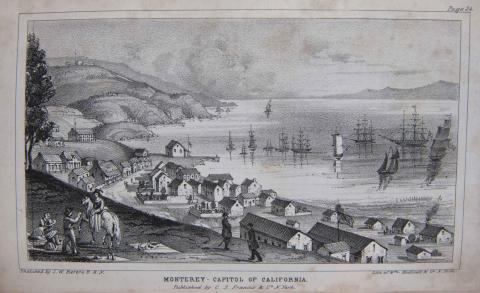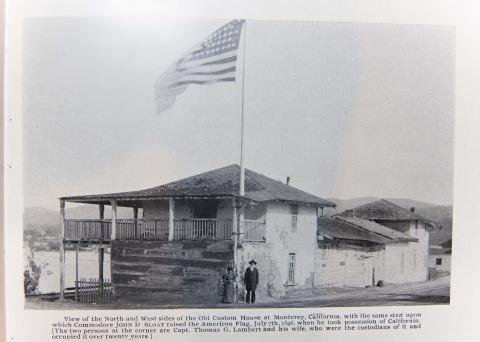Biographies | Images | Maps
During the early 1840s, U.S. policy-makers became aware of the desirability of gaining ports on the Pacific, and were alarmed by the possibility that Great Britain might acquire them first. In October 1842, an overzealous U.S. naval commander, Commodore Thomas ap Catesby Jones, acting on the erroneous belief that Mexico, backed by Great Britain, had declared war against the United States, briefly seized Monterey, California. Jones raised the U.S. flag over the harbor and issued a proclamation claiming the entire area for the United States, which he quickly retracted once he realized his error.
For American expansionists, the acquisition of California had not been an issue in the 1844 presidential campaign, and had elicited little attention in the national press. Preoccupied by more immediate territorial issues, imperialist-minded Democrats saw little need for urgency, particularly in view of Mexico's inability to govern the area.
In 1845, as the crisis with Mexico over Texas became more heated, newly elected president James K. Polk began to take a more aggressive position regarding the acquisition of California. In June, the administration sent secret instructions to Commodore John D. Sloat, commander of the Pacific fleet, ordering him to remain on alert and instructing him to seize San Francisco and other strategic ports if war broke out. The administration's policy was also fueled by rumors, later proved to be baseless, that Great Britain might attempt to purchase the territory, offering as payment Mexico's debt obligations to British creditors. Accordingly, when Polk dispatched U.S. diplomat John Slidell to negotiate with Mexican leaders over the Texas annexation issue, he authorized Slidell to inform the Mexican government that the United States was willing to buy California for $25 million. Slidell never met with Mexican leaders to discuss the offer.
Upon learning of the outbreak of hostilities along the Rio Grande the following year, Commodore Sloat, acting on his earlier instructions, seized Monterey and San Francisco in early July 1846.


